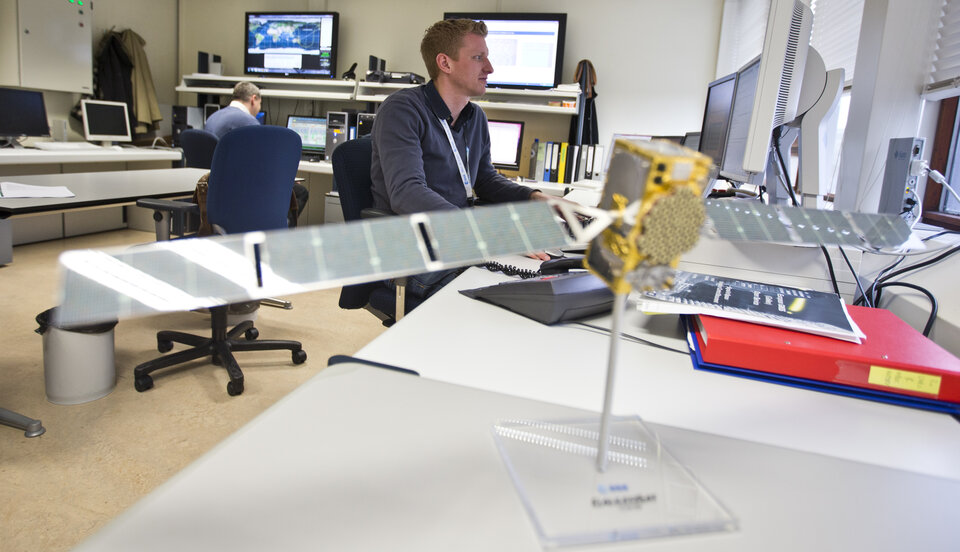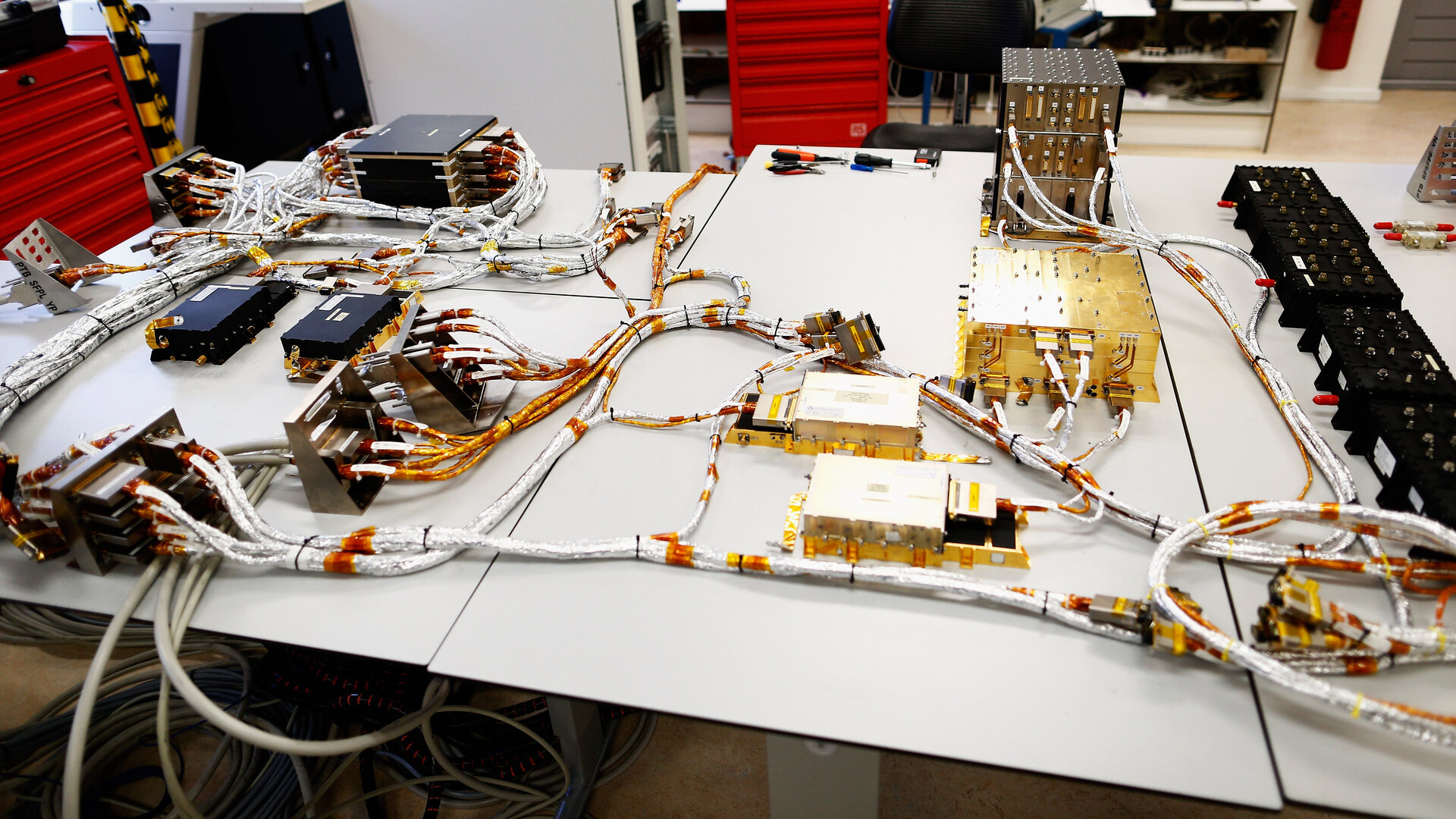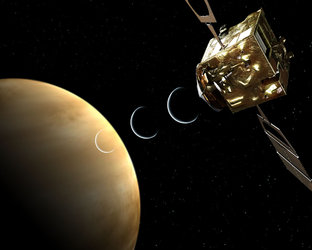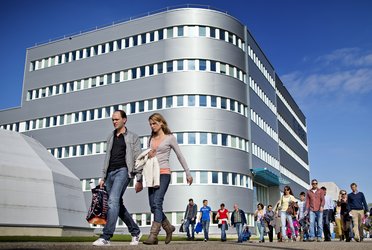Radio Frequency Systems, Payload and Technology Laboratories
What are their roles?
Satellites have one characteristic in common: they all have to reach out beyond themselves either to receive commands, relay telecommunications, perform remote sensing or deliver precision navigation and timing data. These laboratories perform Radio Frequency research for both the space and ground segments.
ESA’s Radio Frequency Systems, Payload and Technology Laboratories perform RF research for both the space and ground segments. The main Lab is made up of five facilities: the General Microwave Lab, Radio Navigation Lab, Telecom Lab, Remote Sensing Lab and RF High-Power Lab (external).
Continue reading below
What services do they offer?

Covering a few tens of MHz to a few hundred GHz, the RF Lab offers systems and component testing, lifetime tests and precision timing evaluation. The Radio Navigation Lab researches satnav systems.
The RF Remote Sensing Lab evaluates and tests designs for radio-based remote sensing systems such as synthetic aperture radar (SAR), radar altimeters and radiometers. ESA’s Telecom Laboratory performs R&D related to telecommunications systems and applications, including both the ground and space segments.
How are they equipped?

The General Microwave Lab is equipped with:
- Time and Frequency facility: generation, distribution and monitoring of timescale traceable to UTC (joint facility with the Radio Navigation Lab)
- Life testing facility: accelerated and long-term testing of (passive and active RF equipment) TWTAs, SSPAs, filters and oscillators in temperature and in vacuum
- MMIC assembly and testing facility: for general-purpose RF testing of microwave and millimetre-wave modules, includes gold wire bonding and gap welding facilities
- GNSS Payload test facility: for end-to-end in-orbit anomaly investigations of navigation payloads and performance evaluation over environmental conditions
(An external lab, ESA’s High-Power RF Lab in Valencia, Spain, probes related harmful RF
effects.)
The Radio Navigation Lab is equipped with:
- Galileo/GPS/Glonass signal simulators: to emulate GNSS constellations with realistic channel models
- Antenna farm comprising high- and low-gain dish antennas: to track individual navigation satellites without interference
- Extensive set of GNSS receivers: for assessing Galileo, GPS, Glonass, Compass, QZSS and SBAS system performance
- Capture and replay signal capabilities: for the analysis of digitally captured real signals
- Mobile in-the-field test equipment: for measuring localised interference and multipath
- State-of-the art hybrid GNNS-3G/4G Network: aided localisation test facility for testing mass-market localisation devices
- PRS Lab: for evaluating Galileo’s most precise and secure signal, the Public Regulated Service
- Time and Geodesy Verification Facility (TGVF) for Galileo Formation-flying testbed: to evaluate satellite formation-flying methods.

The Telecom Lab is equipped with:
- Interactive Satellite Networks consisting of gateways and satellite interactive user terminals with star and mesh connection capabilities
- Antenna farm in Ku, C and Ka bands, amplifiers, frequency converters, wideband satellite channel simulators and software defined radio testbeds
- TT&C and high-speed data downlink testbeds for Earth observation, science and telecom applications
- Secure Communications Test Bed to evaluate the resilience of certain types of Telemetry, Tracking and Command (TT&C) receivers to intentional and unintentional interference including jamming/spoofing attacks,
- The Telecom and Navigation Labs share a custom-built Telecommunications and Navigation Testbed Vehicle for field testing.
The RF Remote Sensing Lab is equipped with:
- Instrument modelling software: for SAR performance assessment and design SAR digital calibration transponder: for assessing inflight performance of SARs. Active array/front-end simulators
- GNSS-R simulator and OceanPal instrument: for examining the end-to-end performance of GNSS reflectometry techniques, including PARIS
- Wavemill end-to-end simulator: for interferometric radar altimeters. It combines a state-of-the-art ocean model, ocean scattering module and radar instrument characteristics for performance assessment and design of wide-swath ocean altimeters and ocean current retrieval by along-track interferometry
- Cloud and rain radar testbed: makes use of an arbitrary waveform generator for assessing the performance of ultra-low sidelobe radar waveforms.
Who are their customers?
We made extensive use of the Navigation Laboratory for the in-orbit calibration of the Galileo system. In particular, it is in this laboratory that we proudly achieved for the first time ever a position fix on ground using the Galileo satellites. Marco Falcone, ESA Galileo System Manager
RF Systems Lab research is helping enable a new generation of radar and space science instruments. The Radio Navigation Lab is supporting the current Galileo service rollout, supporting national government programmes. The others boost Europe’s competitiveness in telecommunications: While RF Lab research improves telecom satellite systems, the ESA Telecom Lab assesses downstream satcom services.
How do I find out more?
contact Lab Manager Riccardo de Gaudenzi
Riccardo.de.Gaudenzi@esa.int






